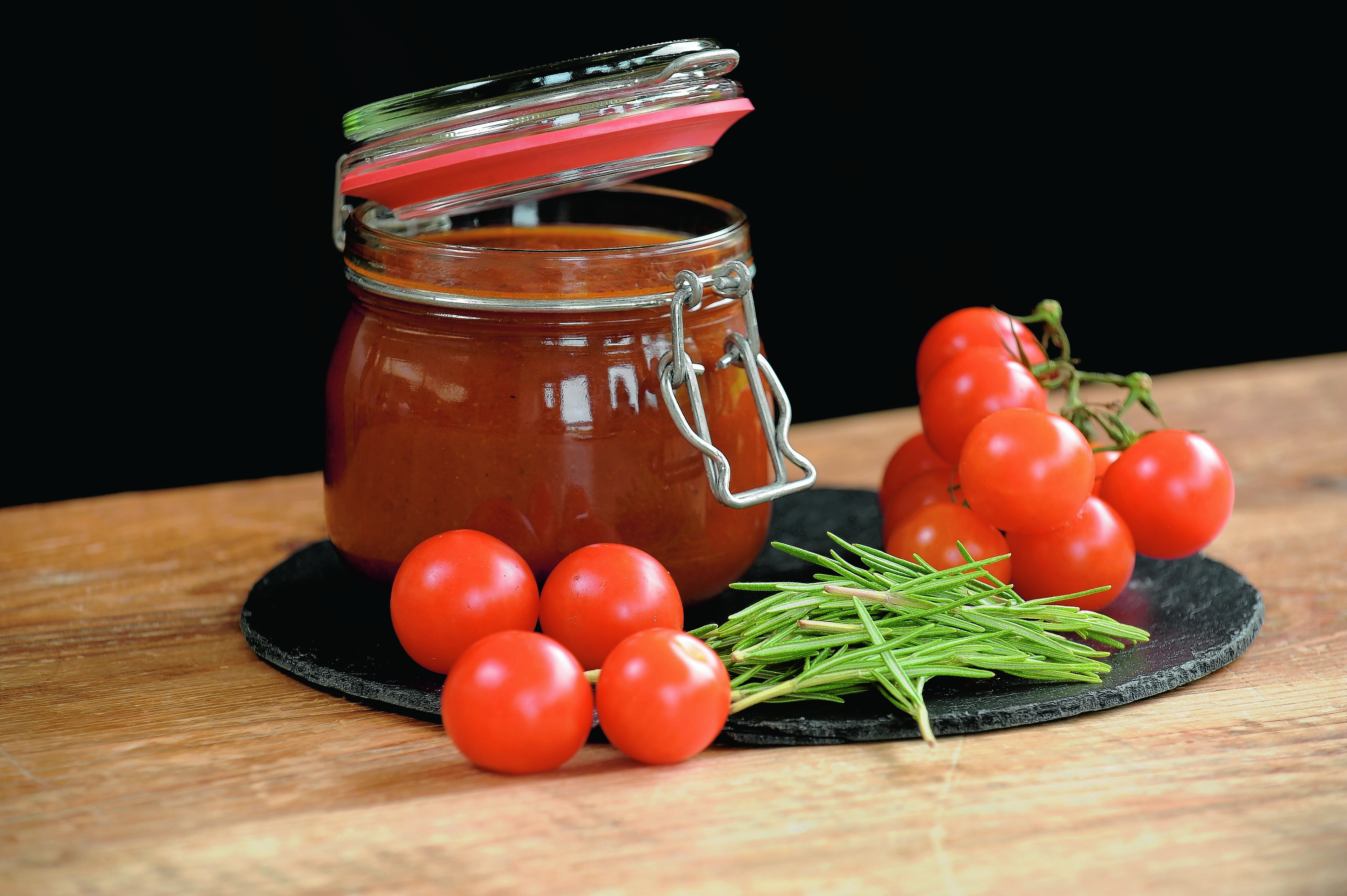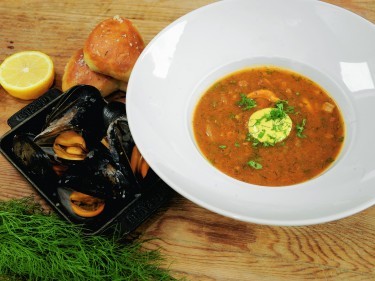Michael Smith, executive chef of the award-winning Three Chimneys restaurant on Skye, creates two flavour-packed recipes using tomatoes
At this time of year, there’s a glut of tomatoes, so September is the perfect month to make the most of them.
It doesn’t matter what tomatoes you use – plum, beef, vine or truss, cherry or baby plum – what’s important is that you use fresh, not tinned tomatoes.
Although the supermarket shelves and greenhouses are awash with tomatoes just now, this recipe for slow-roast tomato sauce can be made all year round.
It provides a base for a multitude of dishes and, once cooked, can be kept in a jar in the fridge for a couple of weeks, but also freezes well.
To get the right consistency, I recommend using a moulin rather than a liquidiser as it really makes a huge amount of difference to the end result.
The sauce is used in the West Coast Fish Soup recipe which also uses homemade fish stock.
It’s worth taking time to make a good fish stock.
Start by sweating down leeks, celery, onion and fennel then add white fish bones (halibut/turbot etc).
Add some white wine, bay leaf and herbs if you have them and top up with plenty of cold water.
Bring gently to the boil, skim off any scum that rises to the surface, then turn down the heat and simmer for 15-20 minutes.
Turn off the heat and let it sit until the bones have sunk to the bottom. When cool, remove the clear liquid (stock). This can then be frozen and used as required.
SLOW-ROAST TOMATO SAUCE
The slow cooking and use of a moulin makes this the most flavoursome and delicious tomato sauce with a wonderful texture.
1.5kg vine tomatoes, chopped
1.5kg cherry vine tomatoes, halved
250g shallots, peeled and sliced
2 heads garlic, peeled and roughly
chopped
Small bunch fresh rosemary and thyme, chopped
100ml ex-virgin olive oil
50ml red wine vinegar (best quality)
70g dark brown sugar
Salt and pepper
Pre-heat the oven to 150C.
Place all the ingredients into a large deep baking tray and mix really well.
Bake in the oven for around 3-4 hours, turning every hour or so to stop any catching or burning.
Once most of the liquid (the tomatoes let out a lot of juice during cooking) is evaporated, remove the tray and allow to cool for 15 minutes.
Now, using a moulin (a drum-like, hand-generated metal machine with a sieve which purees), begin the slightly laborious task of pureeing the contents of the tray.
Have patience and puree every last bit as this is where the most flavour is. The temptation to liquidise the tomatoes must be resisted as this will produce an entirely different and inferior sauce.
The sauce is now ready to use in a multitude of dishes and will keep in the fridge for two weeks. It can also be frozen very successfully.
2 litres fish stock
300g slow-roast tomato sauce base
150g each of finely chopped/diced onion, celery, fennel, carrot, leek
3 peeled and finely grated cloves garlic
Generous pinch of saffron
Salt and pepper to season
Fresh fish: any white fish fillets, salmon, mussels – around 400g
Freshly chopped dill, chervil and fennel
Place a large pot on to a moderate heat gas/hob.
Add a good slug of olive oil and heat gently for 1 minute.
Add the diced vegetables and cook gently until soft. Add the grated garlic and cook for a further minute.
Add 3/4 of the tomato sauce to the pot and mix in well while still on the heat. Now add the fish stock and the saffron, salt and pepper to taste.
Bring the soup to a boil then lower the heat to a simmer, skimming off any scum that comes to the surface.
While the soup is simmering, dice the fish fillets into small cubes, place into a glass bowl and pour over the remaining tomato sauce.
Mix well. Let the fish marinate for 40 minutes while the soup reduces.
Once the soup has simmered for 40 minutes, turn the heat off, add the fish and herbs, mix well and serve immediately, checking whether any more seasoning is required.


